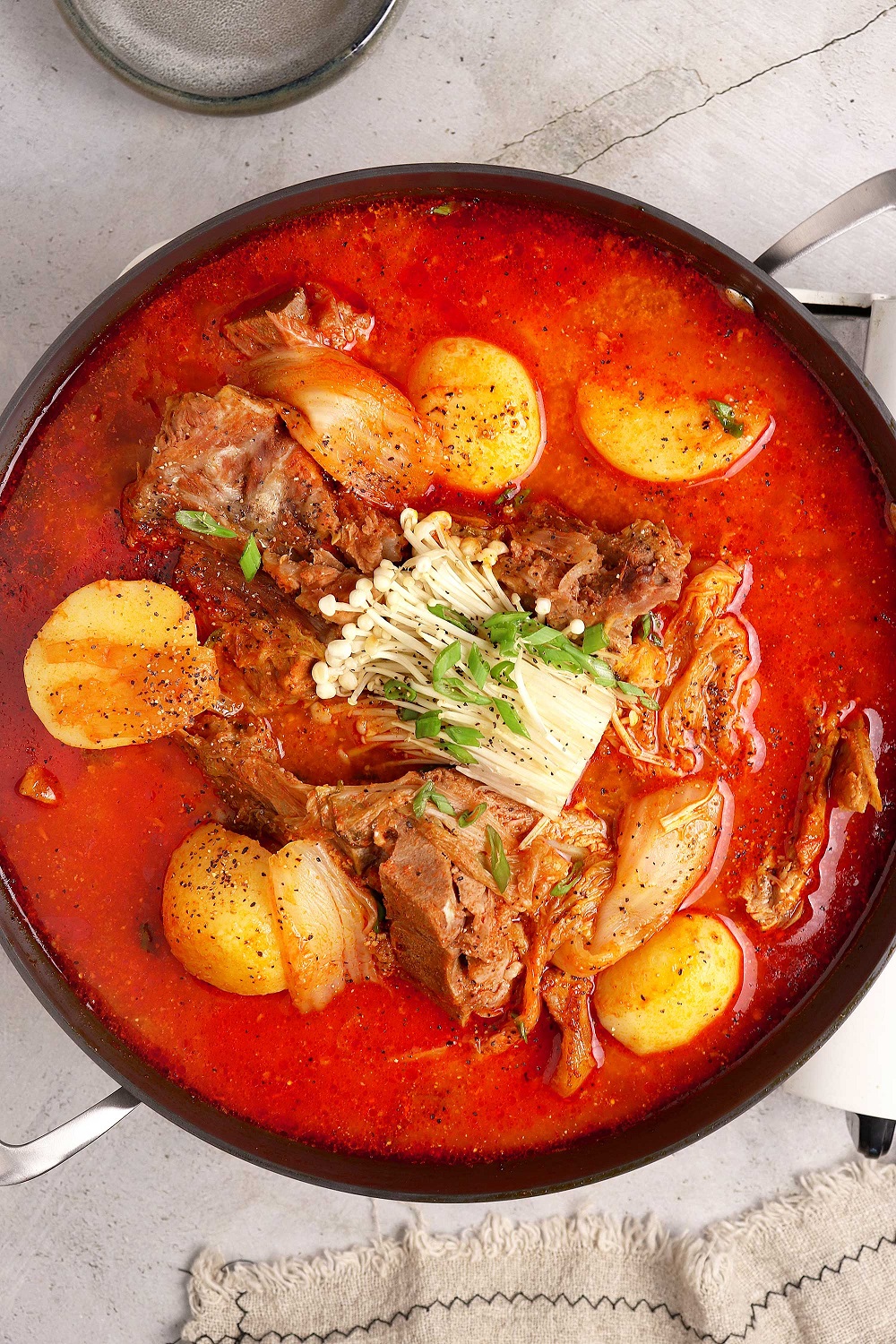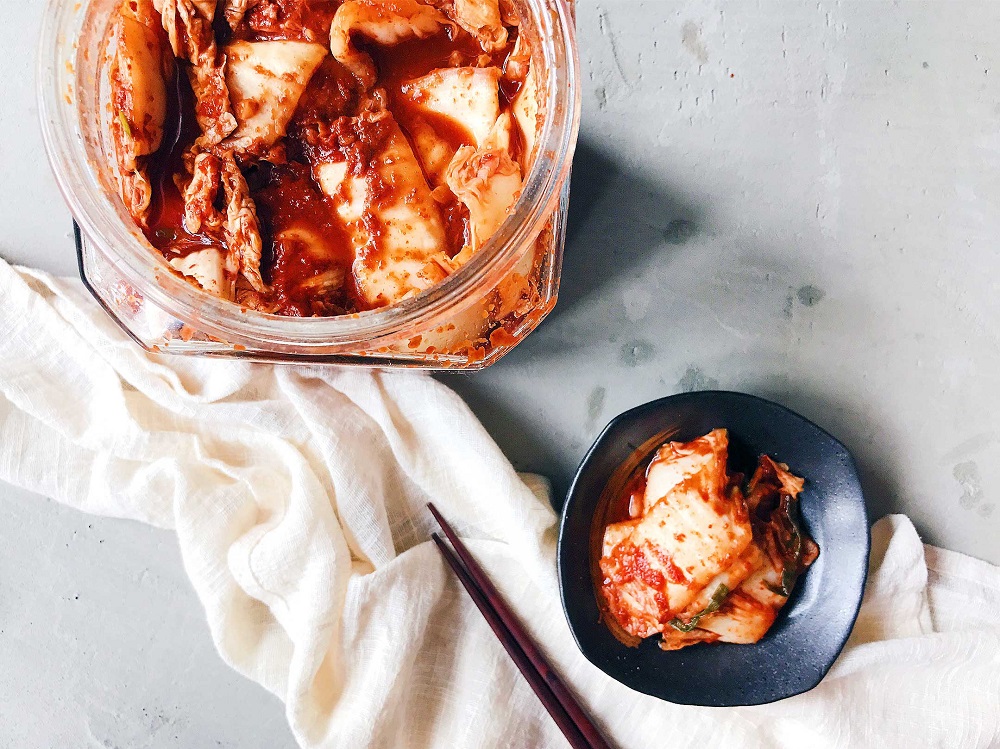This post may contain affiliate links. Please read our disclosure policy.
One of my favourite Korean dishes has got to be gamjatang 감자탕 / Korean pork bone soup. I’m not sure how many of you have heard of it or tried it before since it’s one of the less well-known Korean dishes, but it’s one of the most unforgettable things I’ve ever had in Korea.
About 7 years ago when I was studying in Korea, I happened to come across a restaurant selling gamjatang and so I decided to try it.
After trying it, I was an immediate convert! I can’t describe how good it is in words, but the soup was so savoury and the pork meat was so tender it was falling off the bones.
I haven’t had any gamjatang that was as good as that restaurant’s since then, unfortunately. Also, I haven’t really seen it around in Singapore, so I decided to make it myself since I haven’t had gamjatang in such a long time.
The main ingredient in gamjatang is pork neck bones, which can be commonly found in the frozen section in Korean supermarkets.
It’s also priced really low (the cheapest cut of the pork), making it a great choice for restaurants selling gamjatang. Unfortunately, in Singapore, pork neck bones are not widely available (at least not in supermarkets) and are not as cheap as in Korea or America.
In fact, I got my pork neck bones from a Korean butchery and it was very expensive ($16/kg). If you’re going to make this dish, I suggest you scout for some cheaper pork neck bones before making it!
I think it’s around $4/kg in Korea! Now I’m feeling sad I paid so much for my pork neck bones, but I couldn’t find any other place that sold them so I had to settle for the expensive ones.
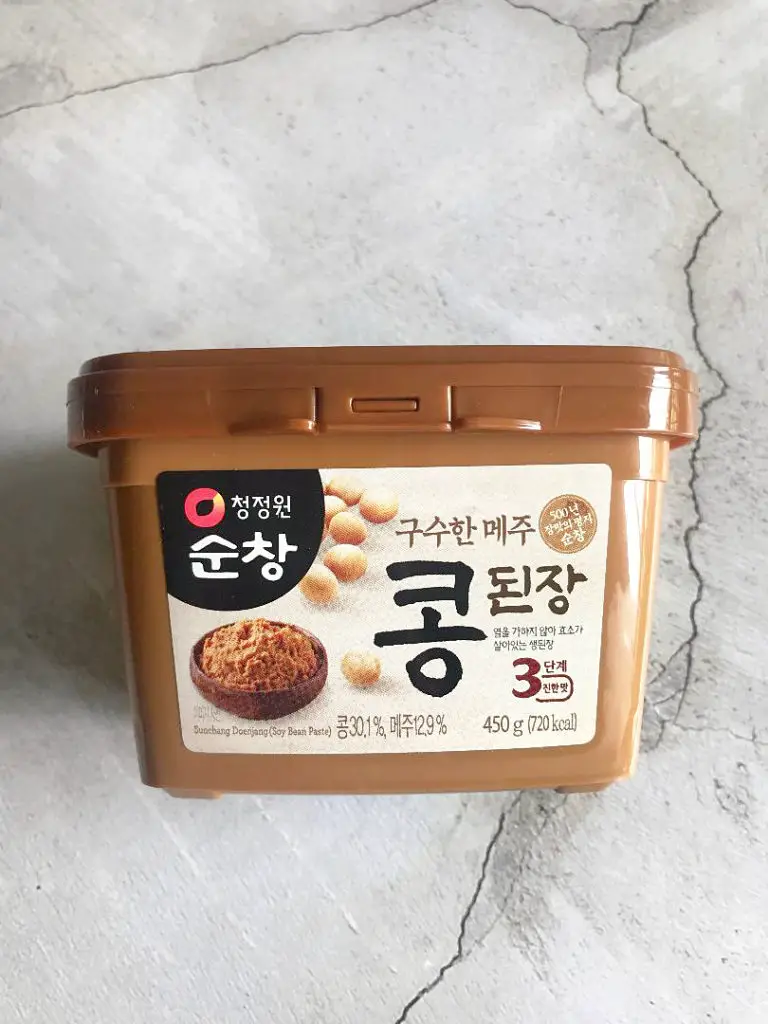
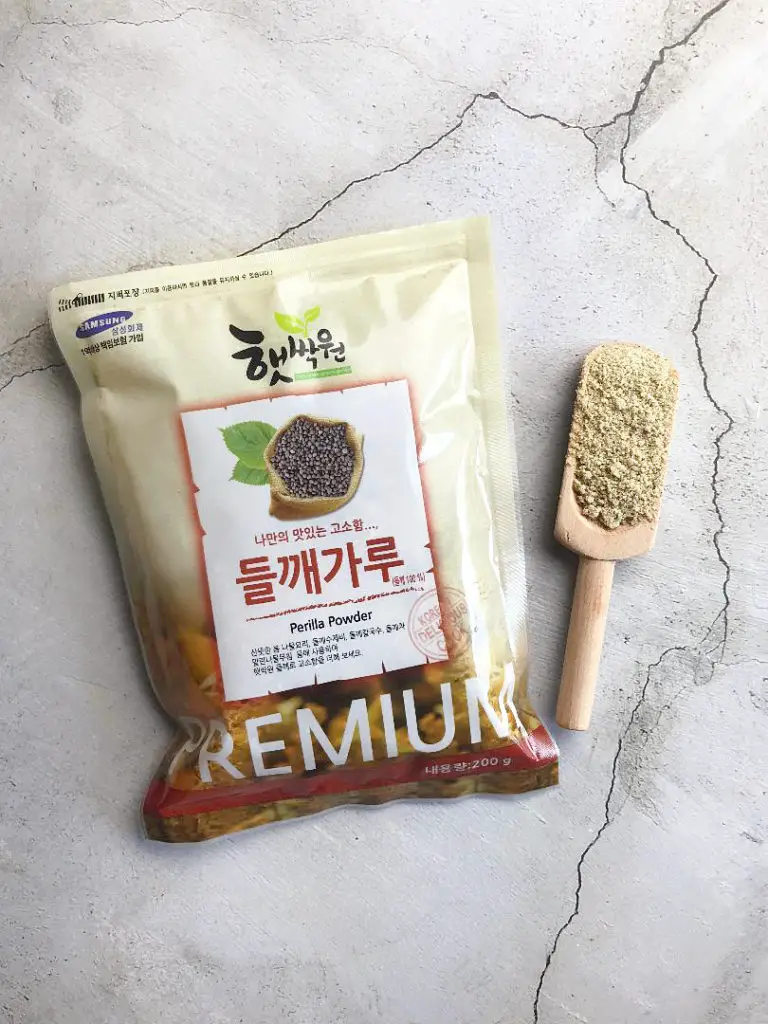
Perilla Powder
You’ll need some doenjang (Korean fermented bean paste) and some perilla powder. It might be slightly harder to find the perilla powder but you should be able to get them from Korean marts. I got mine for about $4 for a 200g packet.
This is one ingredient that you can’t leave out! It imparts a nutty and savoury flavour to the soup, and without it your soup will taste quite flat.
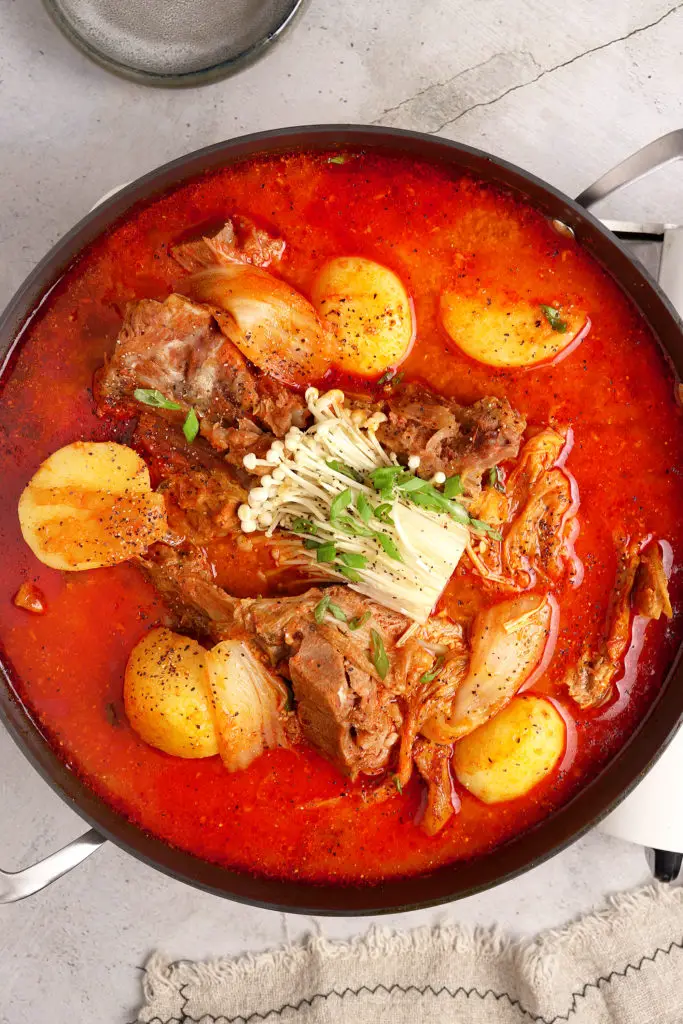
After 2-3 hours of “hard work”, you’ll get to reap the rewards of your effort! Contrary to how red the soup looks, it’s actually not one bit spicy.
If you’re a fan of spicy food, go ahead and add more gochugaru (Korean red pepper powder). I cooked the entire dish in a deep pot then transferred it to a wider pot when it was done, and put it over a portable gas stove so as to keep it hot.
This way, my entire family could also enjoy the dish together. The soup was well flavoured, the meat was tender and falling off the bones, the cabbage was soft yet retained some crunchiness.
Definitely wasn’t as delicious as the one I tried back in Korea, but it was still a good pot of stew.
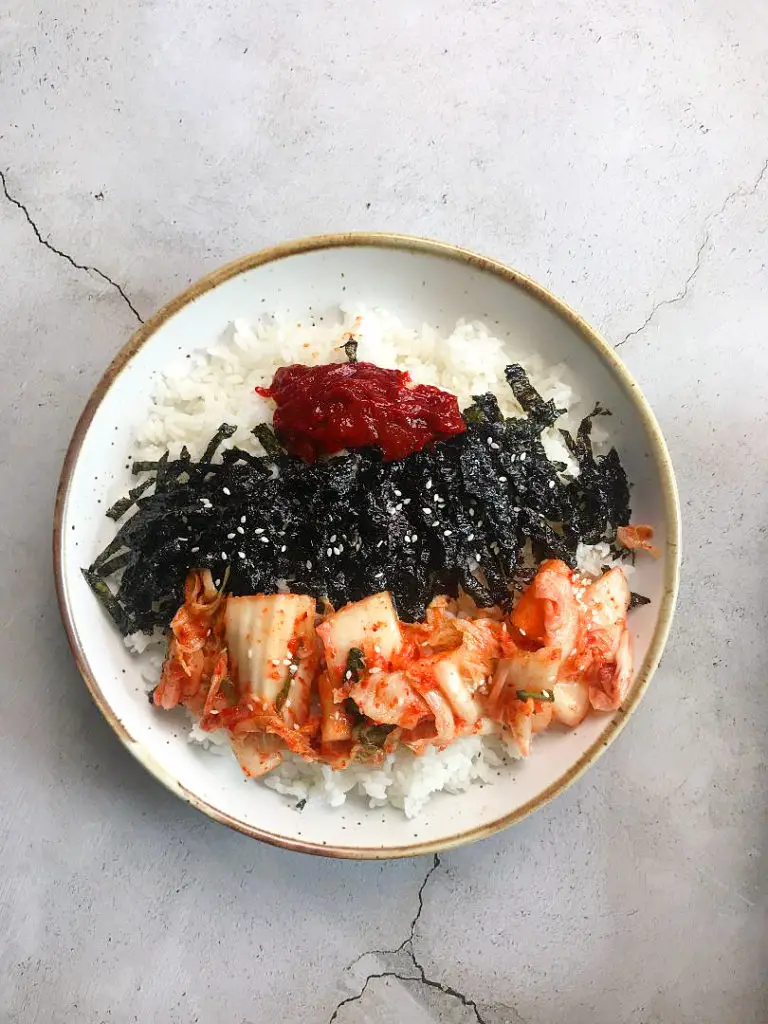
And next is, in my opinion, the best part of the meal! In Korean restaurants which serve stews and soups, if you order fried rice, this is how it will be like: When you’re almost done with your meal, they will add cooked rice, seaweed, kimchi (optional) and gochujang into the pot with some leftover soup and mix it up.
The fried rice, well-flavoured with the savouriness of the soup, the saltiness of the seaweed, the tanginess of the kimchi and the spiciness of the gochujang, is so so good.
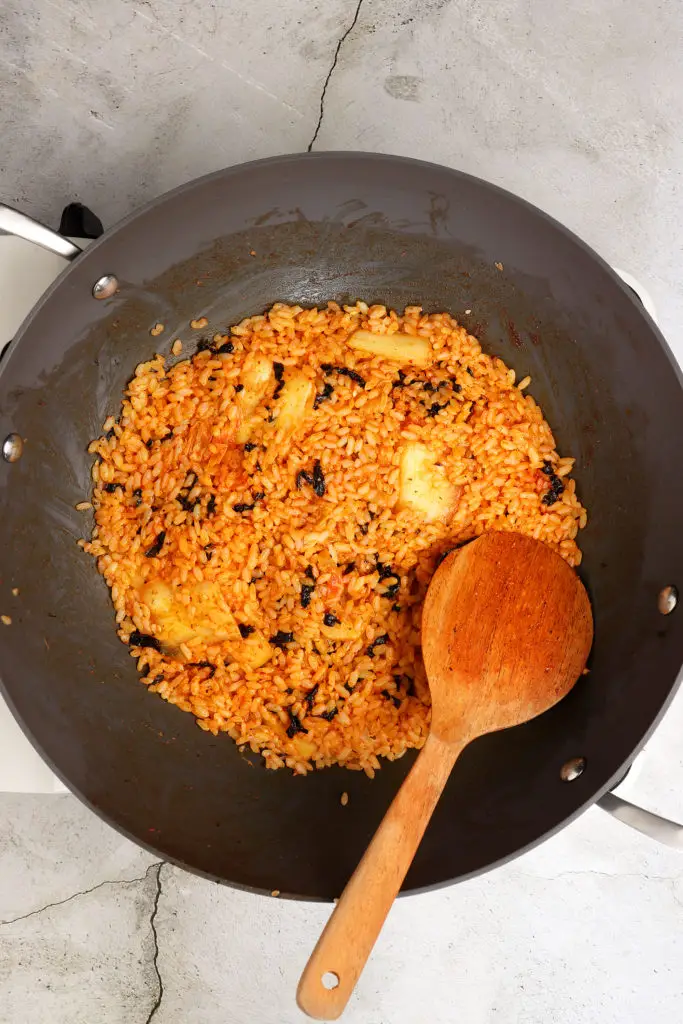
Just by the looks of it, it may not seem that delicious, but I assure you it seriously is! If you ever visit Korean restaurants that serve such stews and soups, you must must order a portion of fried rice.
Of course, if you prefer, you can skip the fried rice altogether and simply enjoy your gamjatang with some plain rice.
For those who have never tried gamjatang before, you should really try this out! It’s as good as, if not better, than the usual famous Korean dishes like army stew or jjajangmyun. For video recipe, head over to my instagram (@_kitchenmisadventures) and view my insta story!
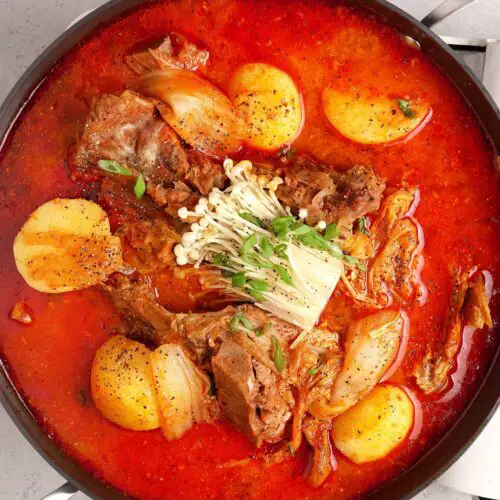
Gamjatang 감자탕 / Korean Pork Bone Soup
Ingredients
- 1.50 kg pork neck bones
- 500 g napa cabbage
- 500 g potatoes halved
- 2.50 l water
- 8-10 perilla leaves
AROMATICS
- 1 yellow onion halved
- 4 stalks spring onion short lengths
- 4-6 cloves garlic
- 10 g ginger sliced
SAUCE
- 8 cloves garlic minced
- 6 tbsp fish sauce/light soy sauce
- 6 tbsp perilla powder
- 4 tbsp doenjang Korean fermented bean paste
- 4 tbsp gochujang Korean red pepper paste
- 4 tbsp gochugaru Korean red pepper powder (add more if you prefer)
- 2 tsp black pepper
- salt to taste
- 4 tbsp water
GARNISH (optional)
- spring onion chopped
- enoki mushrooms
FRIED RICE (optional)
- rice cooked
- seaweed cut into strips
- kimchi
- gochujang Korean red pepper paste
- sesame seeds for garnish
Instructions
- Soak pork neck bones in tap water for about an hour, changing the water halfway through if possible. This is to remove all the blood from the pork bones.
- Bring a large pot of water to a boil. Then blanch cabbage for around 3-5 minutes until softened. Remove cabbage and rinse with tap water. You can use your hands to tear cabbage into half (lengthwise) if any is too big. Keep aside.
- Blanch pork neck bones for around 6-8 minutes until you see scum accumulating on the surface. This is to remove any impurities on the pork bones. Remove the pork bones and rinse with tap water. Remove any impurities or bone fragments present on the pork.
- Discard water left in the pot and wash the pot. Return pot to the stove, then add pork neck bones, all the aromatics (yellow onion, spring onion, garlic and ginger), and 2.5 litres of water into the pot. Cover the pot and bring to a boil, then reduce to medium fire and simmer for 1 to 1.5 hour. The longer you simmer, the better the flavour of the broth.
- In a bowl, combine all ingredients for the sauce. After boiling pork bones for 1-1.5h, add sauce, cabbage and potatoes into pot. Cook for 20-30min until potatoes are fork tender. Add perilla leaves (optional! I didn't add because I don't like the taste) and more salt if needed. Transfer soup to individual bowls or a wider pot over a portable gas stove to keep soup hot.
FRIED RICE
- After all the food has been eaten, leave some soup behind (around 100-200ml will do). Add cooked rice, seaweed, kimchi and gochujang (Korean red pepper paste) and combine well. Garnish with sesame seeds.

